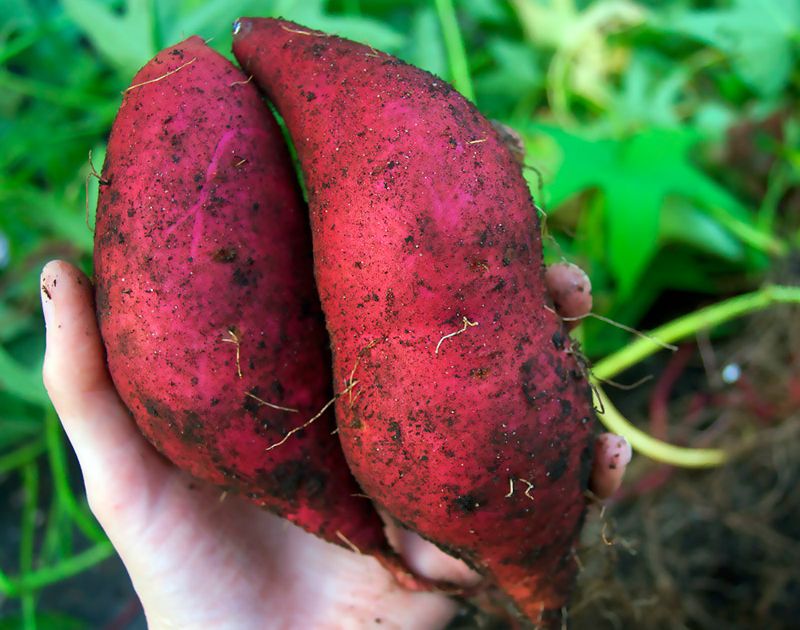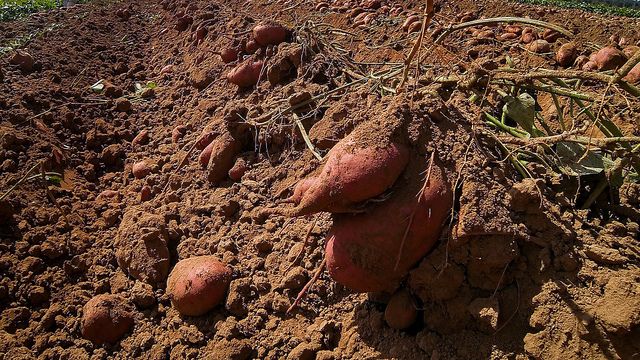
Sweet potatoes typically are simple to grow in all climates, even colder climates, though it may be a bit easier in the tropical and sub-tropical climates. In reality, the problem isn’t growing the sweet potatoes, it is containing them so they don’t become behemoths that take over all your growing space! They do need to have their produce picked regularly to help with containing them, so they also provide an excellent ground cover and keep the weeds down as they mulch the area.
The benefits are quite mind blowing: an excellent and nutritious food source for warmer areas, fewer disease concerns, requiring less attention with water and fertilizer. Sweet potatoes are simpler to grow than potatoes and make a nice change from standard potatoes in terms of flavor and nutrition. Not only are the sweet potatoes themselves food produce, but leaves and shoots can be yummy in salads or stir fries.
How To Grow Sweet Potatoes
This plant comes to us from the warmer climates of South America, so it needs a longer growing season to maximize your harvest. These are vine plants that spread out and produce a great deal of nutrition and produce per square meter. There are several varieties, red, yellow and white with the red having the most vitamin A. Most commonly you will see the red varieties due to the nutritional content. Don’t forget the shoots and leaves!

You will want to start the sprouts about a month before the weather warms up so the plant is more mature when you put it in the ground, to maximize your growing season. You can purchase sprouts from our sources. You will not want to plant outside until the coolest temperatures are above 60 degrees. To starts a sprout you will place your sprout half covered in water. Most people use toothpicks to hold the sprout at the top of a container, quite often a glass jar so you can see the roots growing and monitor progress. As it grows, you will get several areas of green growth. If you want to start more at one time, you can put several sweet potato sprouts in sand, cover them about two inches deep, and keep moist. You will find that your sprouts will get to nearly one foot in a month and have bright green leaves. At this point, you can cut the sprouts apart and plant them in your garden.
Harvesting
You will know that your plants are ready to harvest when the leaves turn yellow, but there is no rush to get the sweet potatoes out of the ground. The longer they sit in the ground the better vitamin storage. You can leave the plants, but you will want to be sure to remove the tubers before the stems turn black as this will be when the sweet potatoes will begin to rot below the ground.
You will find it easier to harvest when the ground is drier, but be sure to dig well away from the plant, because you will find sweet potatoes about a foot away from the parent plant. You don’t want to cut the tubers as this encourages rot. Lay the harvested tubers in the sun for a few hours, and then for about two weeks you will want to keep them in a warm, airy area. Aim for 85-90 degrees with good ventilation. This will cure them so they will store well, for up to several months.









